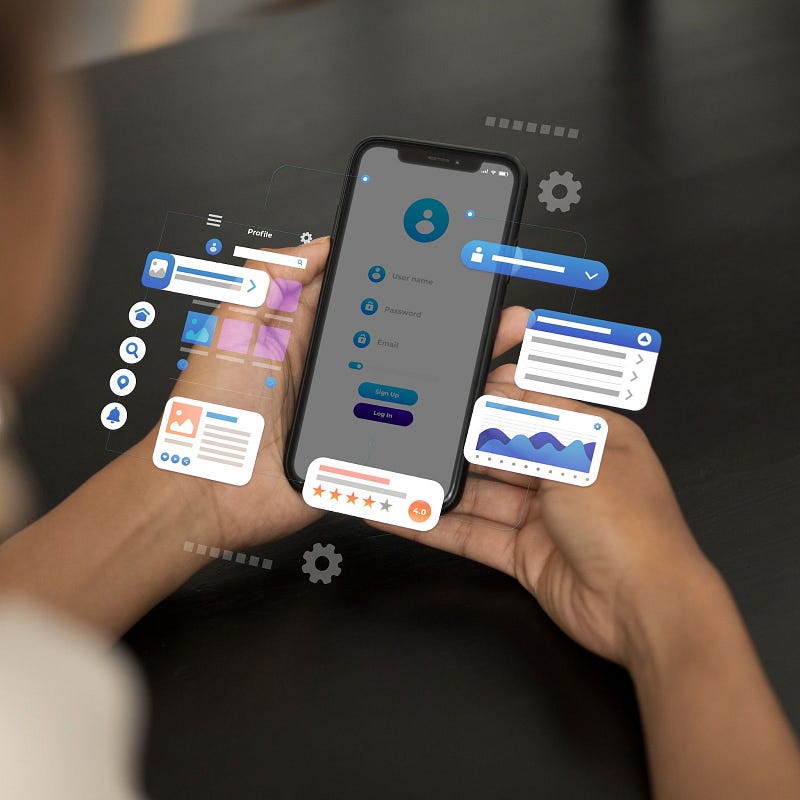

Embark on a journey of innovation with Flutter – Google’s cutting-edge UI toolkit.

Flutter is an open-source UI software development toolkit created by Google. It is used for building natively compiled applications for mobile, web, and desktop from a single codebase. Dart, on the other hand, is a programming language developed by Google, designed specifically for building mobile, desktop, server, and web applications.
Flutter, a cutting-edge UI toolkit from Google, revolutionizes Flutter development, enabling the creation of natively compiled applications for mobile, web, and desktop with a single codebase. Renowned for its efficiency, Flutter empowers developers to build visually appealing and responsive user interfaces. With the Dart programming language at its core, Flutter stands at the forefront of versatile development, promising a unified framework for crafting innovative applications across various platforms.
User Interface (UI) and User Experience (UX) play a crucial role in the success of any application. UI is about the visual elements that users interact with, while UX is the overall experience a user has with a product. A well-designed UI/UX not only enhances the aesthetic appeal but also contributes to user satisfaction, engagement, and retention.
Dart, fueling Flutter, enchants UI/UX with its reactive model, ensuring sleek interfaces. JIT and AOT compilation in Dart deliver high performance. Flutter, driven by Dart, offers rich pre-designed widgets, coupled with hot reload for rapid iterations, expediting UI/UX design. Dart’s strong typing and modern language features foster clean, bug-resistant code, enhancing the overall development experience. The synergy of Flutter and Dart not only streamlines development but elevates app UI/UX to new heights.
In Flutter, widgets are the building blocks of the user interface, serving as versatile components that define the structure, layout, and behavior of an application. Widgets can range from simple elements like buttons and text to more complex structures like navigation bars and entire screens. The strength of Flutter lies in its widget-based architecture, enabling flutter developers to compose intricate and visually appealing user interfaces effortlessly.
Flutter provides a comprehensive set of pre-designed widgets that cater to various UI needs. From basic elements such as containers, rows, and columns to advanced widgets like ListView, GridView, and AppBar, developers have a diverse toolkit at their disposal. Widgets like CircularProgressIndicator, AlertDialog, and FloatingActionButton offer dynamic and interactive features, while the flexibility of customization allows developers to tailor these widgets to meet specific design requirements.

Animations play a crucial role in enhancing the overall user experience (UX) of an application. Here are some reasons why animations are important
Feedback and Response: Animations provide visual feedback, indicating that an action has been recognized and is being processed. This helps users understand the system’s response.
Guidance and Focus: Well-designed animations can guide users’ attention to important elements, such as buttons, notifications, or changes in the UI. They help in directing focus and improving navigation.
Smooth Transitions: Animations create smooth transitions between different states of the UI, making the user experience more natural and pleasing. This is particularly important for preventing abrupt or jarring changes.
Engagement and Delight: Thoughtful and creative animations can make the app more enjoyable and engaging for users. Delightful animations contribute to a positive emotional connection with the application.
Flutter provides a rich set of tools and widgets for creating animations. The framework uses a declarative approach to define animations, making it easy to understand and maintain. Some key features and components for animations in Flutter include:
Animation Controllers: Flutter uses AnimationController to control animations. It manages the animation’s lifecycle, such as starting, stopping, and restarting. It allows you to define animation durations and curves.
Define Animation Goals
Understand User Flow
Choose Appropriate Animation Types:
Prioritize Simplicity
Use Consistent Design Language
Consider Loading and Transition Animations
Focus on Timing and Speed
Create Visual Feedback
